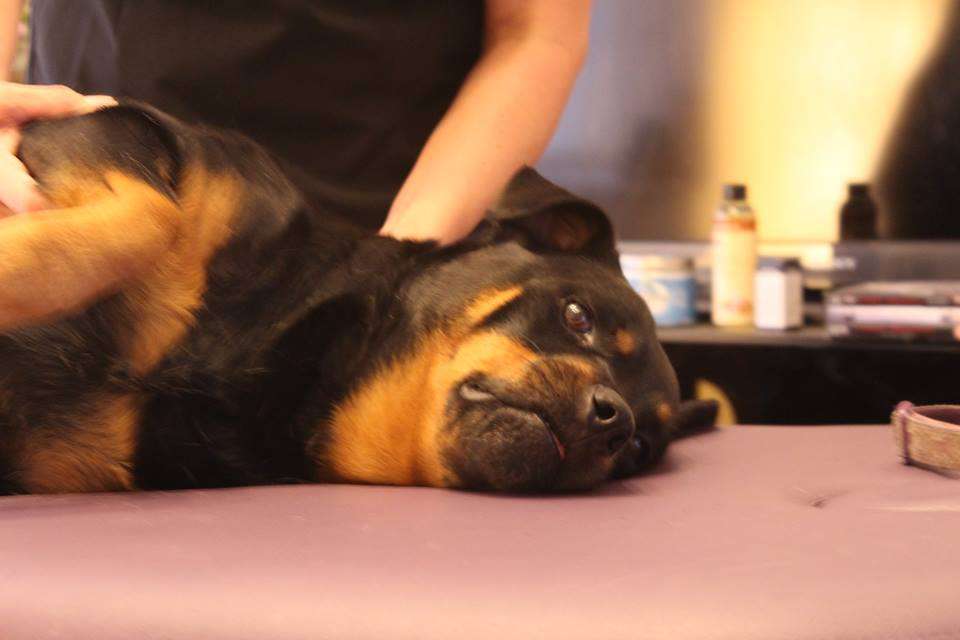Besides the obvious that one therapy uses bespoke massage techniques and the other is basically exercising in water, the results that are seen in your dog can have many similarities. Plus both therapies are now trusted by Vets because we all work together for the benefit of your beloved dog.
Both of these therapies can get the blood flowing through the muscles where needed, improve lymphatic drainage and build up specific muscles with directed treatment using their specific techniques. I am not qualified in Hydrotherapy so I can only comment with authority on Canine Massage (HandsOnHeart Home) but I know that both therapies work really well together. In fact, many of my client’s alternate treatments between myself and their Hydrotherapist with great results.

Both therapies work well on post-injury or post-operative rehabilitation as well as chronic conditions such as Arthritis or Hip Dysplasia.
My understanding of hydrotherapy is that it is great for the overweight dog so relieves undue pressure on the joints… or a dog who struggles to coordinate normal movement. Treatments are usually booked over 10 half hour sessions and then your dog is assessed to see if they need any more. With the guidance of a qualified hydrotherapist, they can get the right type of exercise in a non-weight-bearing environment.
However, the way I personally see it is that if a particular muscle in a group, e.g. the Gracilis in the Hamstrings, is not working properly then the other muscles in that group would be overcompensating (working harder than it should) and at an increased risk of straining too. So therefore, getting your dog’s muscles to work harder in the hydrotherapy pool may actually be exacerbating the original issue if it isn’t identified.
That is why it is better in my opinion to see a Canine Massage Therapist first to identify which muscle has the issue (the Gracilis) through our advanced palpation techniques. We can then remove the “trigger point” or “remodel the scar tissue” in this muscle as well as reducing the “hypertonicity” out of the other surrounding muscles (e.g. Semitendinosus or Semimembranosus) and get them all back working as a group again.
…All within as few as 3 sessions! (As seen in The Canine Massage Guild’s published Clinical Study as well as my own personal experience)
Then your dog can enjoy hydrotherapy to build the muscles back up (if it’s still needed and if your dog likes water obviously!)
This same collaboration between therapists also applies to current hydrotherapy clients (or even Physiotherapy clients) who aren’t getting the results that would be expected in a specific time frame. This is why some of my clients have temporarily stopped their hydrotherapy sessions in the past, come to me so that I can work on a specific issue and then resumed hydrotherapy sessions afterwards.
So yes, different canine therapies benefit different dogs in different ways, depending on the condition being treated but they can actually work really well together too.
If your dog is slowing down or you see any of the issues above then why not contact me to have a chat about whether Canine Massage Therapy or something else is better for your dog’s specific needs?
I may work with dogs but I don’t bite x




0 Comments